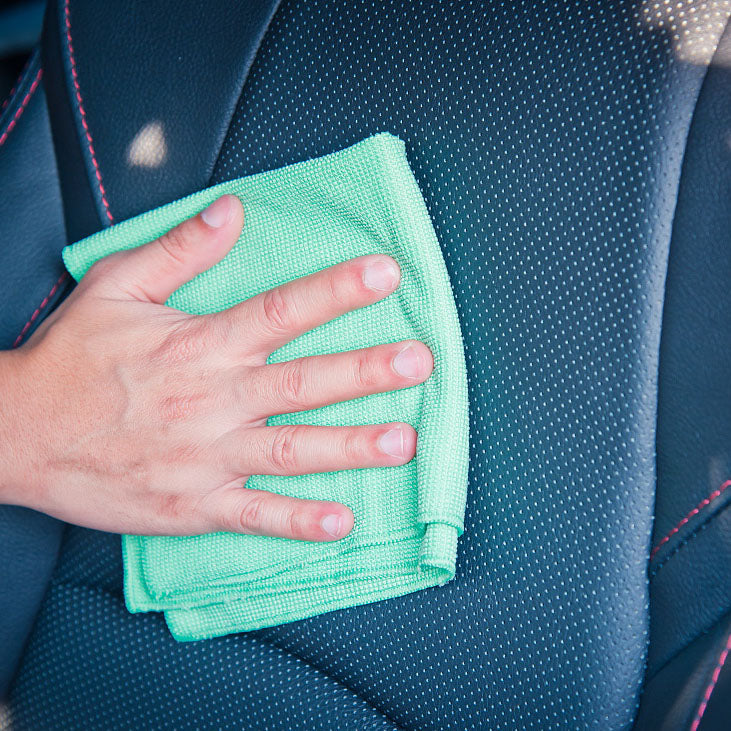
Does Car Leather Smell in High Temperatures? Here's What You Need to Know
Share
Leather seats in your car are often associated with luxury, comfort, and style. They add a touch of elegance to your vehicle, providing both visual appeal and a pleasant feel. However, if you live in a hot climate or regularly park your car under the sun, you may have noticed that the leather begins to emit a distinct smell when exposed to high temperatures. But what exactly is happening, and should you be conce
In this blog post, we'll explore why leather seats in your car can smell in hot weather, the science behind it
Why Does Leather Smell in High Temperatures?
Leather is a natural material, which means it can absorb moisture, oils, and other substances over time. This unique characteristic can be both beneficial and problematic, depending on the environment it's exposed to. High temperatures can accelerate the breakdown of oils and moisture trapped in the leather, causing the material to release certain scents.
Here’s a breakdown of what happens:
· Heat and Oil Release: When leather is exposed to high temperatures, it expands slightly. This can cause oils that were once absorbed or trapped in the leather to be released, resulting in a strong or sometimes unpleasant smell.
· Leather Aging: Over time, leather naturally breaks down as it ages, especially with heat exposure. The process accelerates in hot weather, releasing a distinctive scent due to the breakdown of oils, proteins, and other components in the leather.
Is It Harmful?
Generally, the smell from leather seats in hot weather isn’t harmful. However, if the odor becomes overpowering or sour, it might indicate that the leather is becoming overly dry, damaged, or that mold or mildew is starting to develop. If left unaddressed, these issues could affect the longevity of your seats.
How to Prevent Leather Smell in High Temperatures
While it’s difficult to entirely avoid the effects of high heat on leather, there are several steps you can take to reduce the likelihood of your leather seats developing an unpleasant odor:
· Regular Conditioning: Leather conditioners help maintain the balance of moisture in the material, preventing it from drying out. This can help mitigate some of the smells caused by heat exposure. Apply a quality leather conditioner every 3-6 months to keep your seats supple and hydrated.· Keep Your Car Well-Ventilated: Heat and moisture are a major cause of leather odors, so ventilation is key. Whenever possible, park your car in the shade or use sunshades for the windows to reduce interior heat. If your car is parked in the sun for an extended period, leaving the windows slightly open (if safe) can also help air it out.
· Use Seat Covers: Consider using breathable seat covers, especially during the summer months. These can act as a barrier between the leather and extreme temperatures, protecting the seats from direct sunlight and preventing them from overheating.
· Odor Absorbers: Use products like activated charcoal, baking soda, or specialized odor-absorbing bags to help neutralize smells. These can be placed on the seats or in the car to absorb moisture and prevent the leather from smelling musty or sour.
· Clean Spills Immediately: If you spill something on your leather seats, it’s important to clean it up as soon as possible. Leather can absorb liquids, and leaving spills unchecked can cause stains and odors. Use a microfiber cloth to gently blot the spill, and then clean the area with a leather-safe cleaner.
· Use a Dehumidifier or Air Freshener: For particularly humid climates, using a portable dehumidifier or moisture absorber can help control the moisture levels in the car and prevent the leather from becoming too damp. Alternatively, air fresheners designed for leather interiors can mask odors temporarily, though they won’t address the root cause.

How to Eliminate Leather Smell Once It Happens
If you’re already dealing with an unpleasant leather smell, don't worry! There are a few steps you can take to eliminate it:
· Deep Cleaning: Start by cleaning the leather thoroughly with a specialized leather cleaner. This can help remove any build-up of oils, dirt, or moisture that may be contributing to the odor. Be sure to follow the cleaner with a leather conditioner to keep the material hydrated.· Use Leather-Specific Deodorizers: Leather-specific deodorizers are designed to neutralize odors without damaging the material. Look for sprays that are formulated for use on leather car interiors.
Conclusion
Leather car seats can certainly add a touch of luxury to your ride, but they do require some care, especially in high temperatures. While heat and humidity can cause leather to emit an odor, regular maintenance and the right preventive measures can significantly reduce or eliminate these smells. By conditioning your seats, keeping your car well-ventilated, and taking care of spills immediately, you can enjoy a fresh, comfortable ride all year long.
Do you have any tips for dealing with leather smells, or would you like recommendations for the best leather care products? Share your thoughts in the comments!
